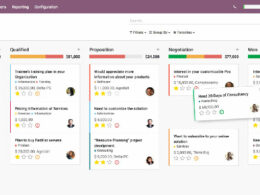How AI Transforms DevOps Infrastructure

Only some know that part of an agile infrastructure includes the automation and control of computing resources, using the electronic cloud to provide the ability to scale and provide fault tolerance. This consists of the way – infrastructure as code (IaC). ChatGPT for developers can be extremely helpful and completely change how you build infrastructure.
DevOps use cases using IaC and AI tools to help solve different scenarios
We’ll show you how AI helps manage cloud resources for DevOps, helping you optimize cost and performance.
Autonomy from the cloud – private and shared
There is an example of an artificial intelligence tool that helps deploy and manage infrastructure in cloud-based providers or non-vendor realms. AI cloud throttling platforms (Turbonomic, Cloud Health) can analyze resource utilization, performance, and cost across cloud service providers to efficiently adapt workload distribution.
Reducing weaknesses in infrastructure building
Eliminate manual and proven flaws in customization processes that slow deployment and create inconsistencies. Smart configuration throttling tools (Chef, Ansible) can automate settings and throttle infrastructure resources.
Efficient infrastructure cost management
You can use artificial intelligence tools to improve reserve allocation efficiency and reduce infrastructure costs. AI-powered resource reduction platforms (ParkMyCloud, Cloudability) can perform usage pattern analysis, advise resource asset size adjustments, their correct designation, and recommend resource reduction.
Joint Infrastructure Application
Suppose developers need secure sharing of infrastructure resources by more than one group or project. In that case, they should use AI-based resource scheduling and pooling tools (Kubernetes with automated cluster scaling) to actively allocate resources based on needs and actual load conditions.
Infrastructure Security
If you integrate regulatory and security program components during infrastructure deployment, AI-enabled reliability tools (Aqua Security, Sysdig Secure) can analyze infrastructure design, find weaknesses, and use a security program during deployment.
Mobile coordination and deployment
Suppose you need flexible regulation and scaling of infrastructure resources according to actual load conditions. In that case, you should use AI scheduling and distribution platforms (Kubernetes with automated pod scaling horizontally) that can automatically scale up or down resources based on some value – CPU usage percentage or request stop.
Kubernetes provides robust security features such as Pod Security Policies, Network Policies, RBAC, and secrets management, ensuring a secure and scalable containerized environment.
Consolidate and throttle infrastructure with CI/CD pipelines
To gradually combine infrastructure provisioning and deployment with CI/CD pipelines, you may use AI-enabled CI/CD platforms (Jenkins with connected machine learning modules, Harness) that can apply machine learning techniques to improve pipeline functionality, convey smart advice, and automate the release process.
Monitoring infrastructure health and efficiency
AI tracking results (Dynatrace, Datadog) are the best choice for monitoring to ensure efficient and complete functionality of infrastructure resources. They can apply machine learning to detect bugs, prevent performance and functionality issues, and provide recommendations for infrastructure improvements.
Rapid revival of infrastructure
AI backup and restore tools (Veeam, Rubrik) are perfect for the rapid resurrection of infrastructure in the event of conflicts and errors. They can automate backup processes, prioritize data recovery tasks intelligently, and apply machine learning for subsequent recovery.
The emergence of problems with the use of infrastructure with AI
The company may need some help with using AI tools for infrastructure. There are a large number of tools that help solve them quickly and easily. A Gitlab license guarantees you can get high-quality results in the shortest possible time.
Lack of Experience
- Problem Statement. A company may need more practical skills to use AI tools.
- Invest in training programs and professional development to increase knowledge. It is also effective to hire AI experts to train employees more effectively.
The nature of the data
- Problem Statement. AI tools rely heavily on high-quality data for training, but a company may need help providing quality data.
- An effective data management methodology should be applied to ensure their availability and quality. It is necessary to use cleaning and processing methods to improve data quality.
Union task
- Problem Statement. Combining AI tools with existing infrastructure and processes can be challenging when a company uses outdated systems.
- Solution. Plan for seamless integration by qualitatively evaluating the existing systems and infrastructure. Use APIs, automation frameworks, and standard protocols to merge progressively. Use architectures with modules and those that can scale and embed AI elements efficiently.
Moral and legal moments
- Formulation of the problem. AI tools have moral and legal issues, including privacy, reliability and security, and adherence to certain norms, which create difficulties in infrastructure change.
- It would be best to create guidelines for privacy and security issues and apply good testing to detect errors to meet the requirements.
Regulation adjustments
- Formulation of the problem. AI tools are associated with changes within the company, including the interaction between employees.
- Create a change management system to prevent various obstacles to using AI and adapt to change.
Conclusion
Using artificial intelligence for infrastructure provides many benefits for the efficient functioning of the organization’s system. The main thing is implementing tools promptly and using them correctly per the requirements and standards.
- Streamline Data Access with JavaScript’s for-in Loop - May 19, 2024
- Master Your Build: Essential Java Build Tools - May 19, 2024
- Stay Connected With Messaging and Chat Apps Like Messenger - May 18, 2024








